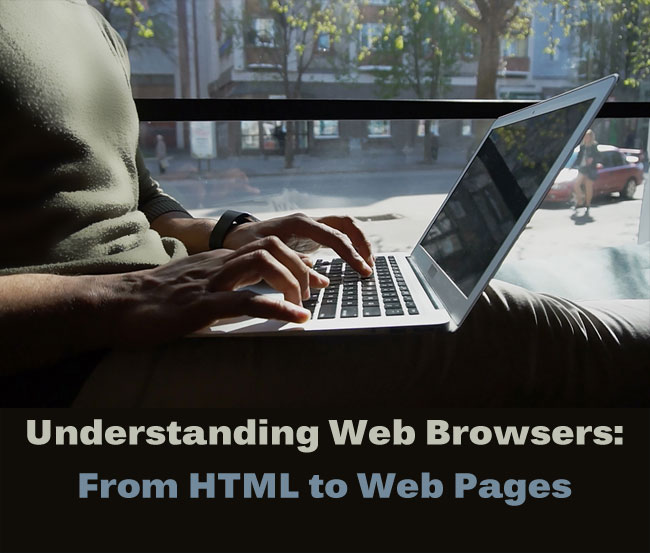
HTML documents are the building blocks of a website. They include HTML tags as part of the “RAW” technical code. But these files cannot become the elegant web pages that you see online… without the help of a web browser.
Why should you care if you are the owner of a website?
You, along with many other small business owners, probably think that the “Rest of the World” sees your website exactly the way you do.
But that is not the case.
What exactly does a web browser do?
When you open your web browser and type in a web address (URL) for a web page, the browser submits a request to the server. It is the web browser’s job to take the HTML document, related CSS files, photos, images and other necessary files that a web designer has uploaded to the server, process the “RAW” technical code and load all the elements together… all in an effort to create the elegant web page that you and your designer had in mind.
Every time you perform an action on the page, such as clicking buttons and following links, the browser continues the process of requesting, processing, and presenting content.
- The web designer writes the instructions for a web page.
- The web browser interprets those instructions.
There are many different web browsers, such as Chrome, Mozilla Firefox and Internet Explorer. If you have a desktop computer, a laptop, tablet or a mobile device, you probably have one pre-installed. There are also many versions of web browsers. If you have Internet Explorer on your computer, you may have IE9, IE10 or IE11 installed.
 The Good News about Web Browsers
The Good News about Web Browsers
- If you have a desktop computer or laptop, you can have more than one web browser.
- If you decide to change your browser or add another one, you don’t have to uninstall the browser that’s currently on your computer.
- It’s easy to download a web browser and upgrade to a newer version of the same web browser.
- Web browsers are FREE.
 The Not-So-Good News about Web Browsers
The Not-So-Good News about Web Browsers
- Each web browser interprets a web designer’s instructions a little differently.
- Some of the older browsers may not understand some of the new “raw” HTML code at all. (This is because HTML is evolving all the time.)
- Browsers will also render a website differently depending on if you’re viewing it on a PC or a Mac.
- A WEBSITE is not like a BROCHURE, where you can control the exact color, font size, and perfect placement of images. A WEB BROWSER is also not like a PRINTER.
![]() One of the greatest challenges in website design today is getting a website to display nicely in all the different internet browsers, computers, mobile devices, screen sizes, etc., out there. What most web designers do is test their pages in a variety of web browsers to make sure their pages look ‘good enough’ in all of them.
One of the greatest challenges in website design today is getting a website to display nicely in all the different internet browsers, computers, mobile devices, screen sizes, etc., out there. What most web designers do is test their pages in a variety of web browsers to make sure their pages look ‘good enough’ in all of them.
But despite your web designer’s best efforts, it is inevitable that someday you will look at your website on a different computer and see subtle differences in how it looks.

Return to Top